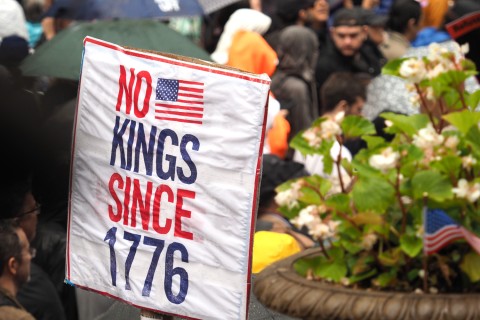Ratings system: Child protection vs artistic freedom
Dinner would have to wait. Eddie Schmidt and Kirby Dick wanted to interview me in connection with a documentary they were making for the Independent Film Channel (IFC), and Schmidt wanted to discuss the church’s relationship to the film industry. It looked like a promising interview. I should have known better.
At the time, I was in Los Angeles to attend an appeals hearing on a film’s rating by the Motion Picture Association of America (MPAA), an assignment I have on behalf of the National Council of Churches’ Communications Commission. I was accompanied by a colleague from the Catholic Office for Film and Broadcasting; both of us had been invited by the MPAA and the National Association of Theater Owners (NATO) to act as what Jack Valenti describes as “outside witnesses” to the process.
When I saw This Film Is Not Yet Rated a few months later, there was nothing in it about the history of the churches’ relationship to the film industry. Forget about historical perspective; this documentary is a polemic against the MPAA, an attack on what it calls the system’s secrecy and lack of fairness toward independent films.
The film also ignores a major purpose of the system: to inform parents and protect children. Instead of conveying what I said in the interview, the filmmakers try to persuade the viewer that church involvement in rating appeals is an ominous, moralistic threat.
My presence on screen is reduced to a few tight-lipped responses to questions that were designed to lure me into revealing the “secrets” of the process. It is humbling to experience how editing can shape any response to suit a film’s objective.
Schmidt ignored the history that I gave him—a story that begins in the 1960s, an invigorating era for those of us who love movies. Hollywood was making artistic films inspired in part by the films of such European directors as Ingmar Bergman, Michelangelo Antonioni and Federico Fellini.
The increased candor in those films led to tighter local censorship, which culminated in a legal ruling on April 22, 1968, in which the U.S. Supreme Court ruled against the city of Dallas in Interstate Circuit v. Dallas. In this case the Dallas censor board had banned the French picture Viva Maria! as inappropriate for all moviegoers, and the Interstate Circuit had appealed the ban.
Even as it ruled in favor of Interstate Circuit, the Supreme Court made a suggestion to the Dallas censor board: a future ordinance, one that only prevented children from seeing films unsuitable for them, might receive more favorable legal treatment. Dallas heard that message, and so did Valenti, the new MPAA president, who had just finished a stint as a top White House aide to President Lyndon Johnson.
Valenti, who had already started work on a film industry ratings system, was trying to persuade industry bosses and NATO that it would be wise to voluntarily limit their audiences through a ratings system. The Court decision strengthened his case. Valenti also spoke with national religious officials, including William Fore, director of the film office for the National Council of Churches, and Patrick J. Sullivan, director of the National Catholic Office for Motion Pictures (as it was then known), both of whom were in dialogue with the MPAA on the need for a rating system that would protect children.
As chair of an NCC committee on film industry relations, I attended the 1968 meeting at which the two national church bodies officially endorsed the new MPAA rating system. Valenti later invited Fore and Sullivan to provide “witnesses” to attend each appeal of a rating decision (six to eight films a year).
Kirby Dick is promoting This Film Is Not Yet Rated as a plea for artistic freedom, and the majority of film critics appear to sympathize. Rotten Tomatoes, a Web site that tracks film reviews, reports that Not Yet Rated has received an 82 percent favorable rating from 74 media critics, reflecting the usual bias against any content restriction. Dick and the film people he quotes in his film are aware that the NC-17 rating allows absolute freedom for adult viewers—but they don’t want to lose the profits they would get with distribution to an under-17 audience.
A New York Times editorial praises Not Yet Rated as a “feisty, intellectually engaging” documentary and complained that “most of the raters are anonymous, so the public cannot assess whether they are qualified or impartial judges.” With more thought the Times might have realized that the raters are anonymous for one simple reason—to shield them from public pressure, including that which could come from film producers.
The Times also laments that “the appeals board has long had representatives of the Catholic and Episcopal churches—but never of any other religions.” Actually, the two church representatives are appointed by the U.S. Conference of Catholic Bishops and the National Council of Churches. The Protestant participant since 1993 has been a United Methodist (that would be me).





